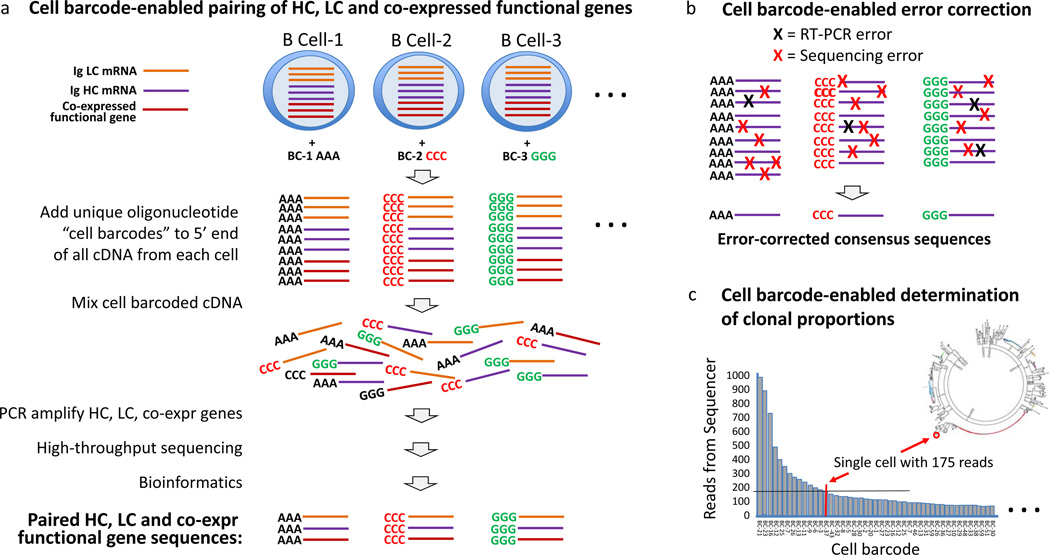Figure 3.
Cell barcodes enable robust antibody repertoire sequencing. Cell barcodes (represented by AAA, CCC and GGG) added with the template switching activity of RT27,34,43 have many advantages, including preservation of the IgH and IgL pairs expressed by individual B cells, enabling accurate determination of the error-corrected sequence and of clonal proportions. a | In the approach presented, all cDNA generated from each cell receives the same unique barcode; therefore, coexpressed functional genes indicative of functional subsets of B cells (or T cells) can also be characterized.27,34,43 Both cell and molecular barcodes enable quantitative analysis of mRNA in individual cells. b | Multiple copies of each mRNA are expressed by each cell, and for each cell all mRNA receives the same cell barcode; therefore, cell barcoding enables correction of both PCR and high-throughput sequencing errors. c | Cell barcodes enable accurate determination of clonal proportions. Cell barcodes enable binning of the IgH and IgL chain reads from each B cell, thereby providing accurate determination of clonal proportions. By contrast, molecular barcodes do not enable RT-PCR error correction, IgH and IgL pairing, analysis of coexpressed genes or accurate determination of clonal proportions.

